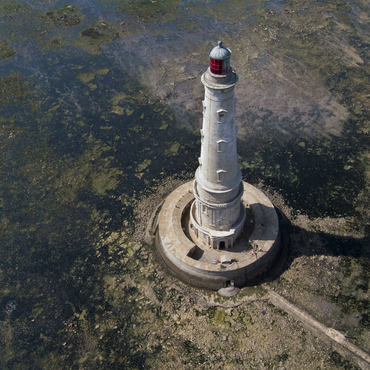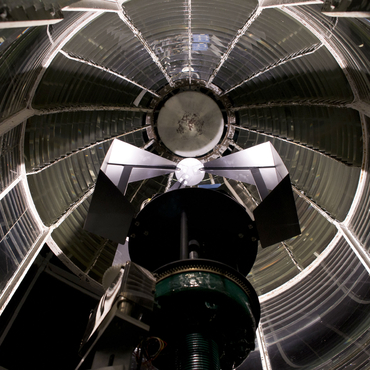
- Home
- King of Lighthouses
- Visitors to the lighthouse
- The future of Cordouan
Cordouan rose from the sea during the Wars of Religion, and since then has endured wars, revolutions and the passage of time. It has known times of glory and times when it has sunk into oblivion. The lantern, the lighting system and the tower itself have all been transformed significantly. Now, with the elimination of its keepers, Cordouan is sailing into uncharted waters as it begins its fifth century. Its historic, aesthetic and heritage aspects are the subject of discussions and decisions involving the government, local authorities and all of the friends of the lighthouse – discussions vital to the structure's future. For the past two years, and with an eye to the "major survey" on 29 July 2012, a mixed association has been planning how the lighthouse will be run, in connection with the French government, local authorities, the friends of Cordouan association and transportation authorities. The idea of abandoning or closing Cordouan is unthinkable: the light is still lit for sailors and visits to the lighthouse fuel a small local economy. But the connection to Cordouan is first and foremost symbolic. The poem commissioned by Louis de Foix ends with a prophetic triplet: In this you have achieved eternal honour, This lighthouse, which will never cease— Until too this world greets its final hour. The end of Cordouan would be the end of a world – but what world? Perhaps the end of a certain view – one very much challenged today – of "modernity", a relationship between political power, territory and aesthetics of which Cordouan is a unique expression. Cordouan stands witness to the willingness of people to inhabit the world and to give it meaning – a meaning that they must continually question and reinterpret. For four centuries, nature, art and technology have been in dialogue at Cordouan, and it is hoped that all concerned will come together so that this dialogue will never end.
Associated media
Open Media Library

Cordouan Lighthouse

The lantern of the Cordouan Lighthouse

The lantern of the Cordouan Lighthouse

The lantern of the Cordouan Lighthouse

The lantern Cordouan Lighthouse

The lantern of the Cordouan Lighthouse

The lantern of the Cordouan Lighthouse
